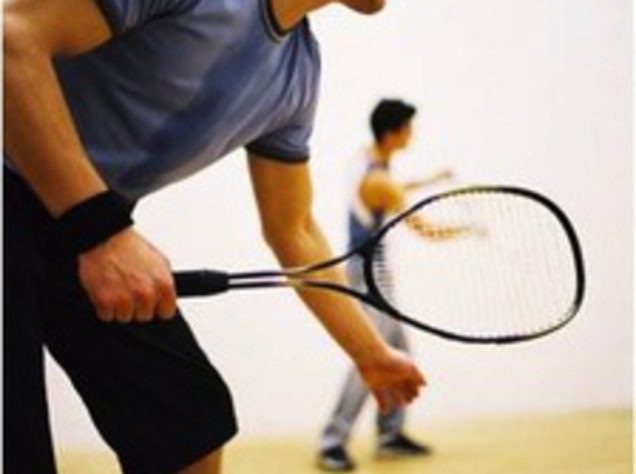Squash is a complex game that involves quick reactions and strategic thinking. The angle of every shot off any wall will determine where the ball will land and how difficult it will be for the player to return. If you want to improve your game, you should start with your serve. The serve in squash can be the difference between winning and losing a point. Here are three types of squash serves you can use to give yourself an advantage.
Lob Serve
The objective of the lob serve is to make the ball land in the back corner of the squash court, close to both the glass and side walls. Aim for a spot just below the out line on the front wall. Try to hit your serve at an angle that will cause the ball to hit the side wall inside of your opponent’s quarter of the court. This is hard for your opponent to return for a few reasons. It forces them to try to volley the ball before it hits the side wall off your serve. If they cannot volley it, they have to try to hit the ball out of the back corner of the court, which is a tricky shot.
Power Serve
This squash serve is similar to a tennis serve as they are both performed over-hand. This serve is especially effective when used to surprise your opponent. You can choose to place this serve in a few areas that might give you the upper hand. If your opponent is expecting the serve to come to one side of their body, serving a low hard power shot directly at their body will take them by surprise and may force an error. Try not to rely too heavily on this serve as it is hard to recover quickly from it. Your opponent may be able to volley a return before you complete your follow-through.
Backhand Serve
The backhand squash serve can be a lob serve or an underhand power serve. The backhand serve is performed from the forehand serving box. This means the right serving box for right handed players and left for left handed players. There are two significant advantages to using a backhand serve on your forehand side. The first is it allows you to get to the center of the court quickly. You don’t have to turn your body 180 degrees to get yourself in position for your opponent’s return. Controlling the center of the court can lead to winning the point. The second advantage of this serve is the ability to play a tighter angle shot towards the side wall. It is harder to return a serve that is close to the wall.
If you decide to utilize any of these techniques, be sure to practice them before you try them in matches. Improper technique can give your opponent the advantage off your serve. Another important consideration is variation in serving style. If you switch up your serves, you can catch your opponent off guard and force them to make an error. If you are looking for more tips to take your game to another level, be sure to check out the rest of our squash articles and other coaching resources.
CoachUp is the safest and easiest way to find a private sports coach. With our 100% money-back guarantee and vetted coaches, anyone can achieve their full athletic potential. Find your perfect private coach today and become the athlete you want to be!
How useful was this post?
Click on a star to rate it!
Average rating 3.3 / 5. Vote count: 4
No votes so far! Be the first to rate this post.



